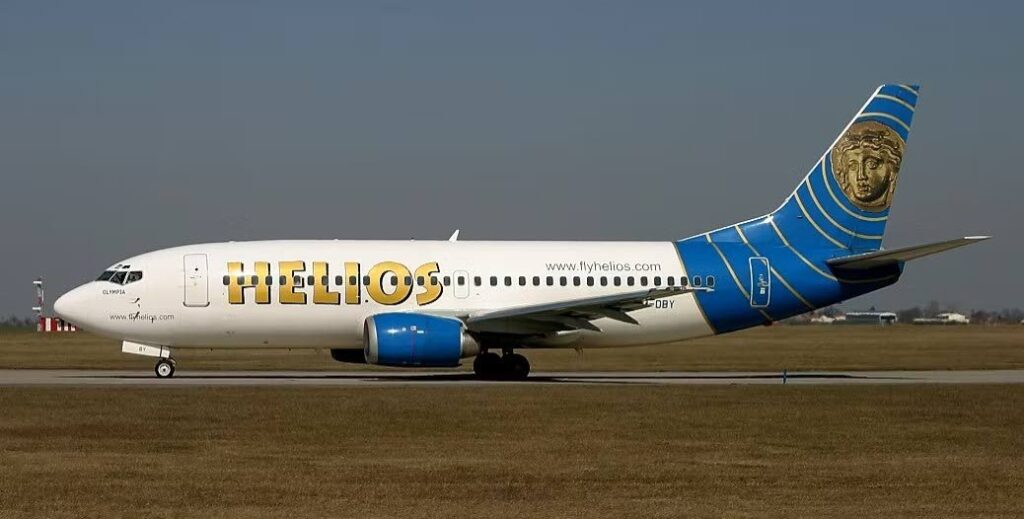Human error, hypoxia, disaster

On August 14, 2005, Helios Airways flight 522, operated by a Boeing 737-300 from Larnaca, Cyprus to Athens, Greece, flew into a mountain, killing all 115 passengers and six crew members on board. It was the deadliest aviation disaster in Greek history.
The aircraft had arrived at Larnaca from London earlier that morning.
The flight crew from London made an entry in the aircraft technical log: Aft service door requires full inspection, due to a report by the flight attendants that abnormal noises were heard coming from the right rear service door.
A maintenance engineer did the inspection. In order to determine the source of the air leak, the engineer performed a pressurisation leak check, and in doing so, he set the pressurisation controller to the manual position.
However, the engineer failed to reset it to auto on completing the leak check.
The flight crew operating the aircraft from Larnaca to Athens failed to observe that the cabin pressure controller was incorrectly set to the manual position during the pre-flight check, the after-engine start checks, and the after take-off check.
As the aircraft climbed, and with the cabin pressure controller set on manual, the pressure inside the cabin gradually decreased.
At an altitude of 12,040 feet the cabin altitude warning horn sounded, which should have prompted the crew to stop climbing, but it was misidentified by the crew as a take-off configuration warning, as the alert sound for both warnings is identical.
In the next few minutes, several warning lights on the overhead panel in the cockpit lit up.
One or both of the equipment cooling warning lights came on to indicate low airflow through the cooling fans, as a result of the decreased air density, accompanied by the master caution light. The passenger oxygen light illuminated when, at an altitude of approximately 18,000 feet, the oxygen masks in the passenger cabin automatically deployed.
Shortly after the cabin altitude warning sounded, the captain radioed the Helios operations centre and reported the take-off configuration warning on and cooling equipment normal and alternate off line. He then spoke to the maintenance engineer who had done the pressurisation leak check, and repeatedly said the cooling ventilation fan lights were off.
The engineer then asked: "Can you confirm that the pressurisation panel is set to auto?"
However, the captain, already experiencing the onset of hypoxia's (lack of oxygen) initial symptoms, disregarded the question, and instead asked in reply, "Where are my equipment cooling circuit breakers?"

This was the last communication with the aircraft.
Numerous attempts by air traffic control (ATC) to contact the aircraft were futile. The aircraft continued to climb until it levelled off at 34,000 feet. Later, it entered the holding pattern for Athens airport at 34,000 feet and remained in the holding pattern on autopilot for the next 70 minutes.
At this point, fearing a possible terrorist incident, the Greek military scrambled two F-16 fighter aircraft to intercept the aircraft. On making visual contact, the military pilots observed that the first officer was slumped motionless at the controls, and the captain's seat was empty. They saw oxygen masks were dangling in the passenger cabin.
They also reported that a male flight attendant entered the cockpit and sat down in the captain's seat, having remained conscious by using a portable oxygen supply. He waved at the F-16s very briefly. A female flight attendant was also seen in the cockpit helping her male colleague to control the aircraft. He held a UK commercial pilot's licence, but was not qualified to fly the Boeing 737.
As soon as he entered the cockpit, the left engine flamed out owing to fuel exhaustion, and the aircraft left the holding pattern and started to descend.
The accident investigators concluded that the male flight attendant's pilot experience was insufficient for him to control of the aircraft.
However, he was able to bank the aircraft away from Athens and towards a rural area, perhaps to save lives on the ground.
Ten minutes after the loss of power from the left engine, the right engine also flamed out and the aircraft crashed into hills near Grammatiko, 22 nautical miles from Athens, killing all 121 people on board.
During the accident investigation, recordings from the cockpit voice recorder (CVR) enabled investigators to identify the flight attendant who entered the cockpit in order to try to save the plane. He called Mayday five times, but because the radio was still tuned to Larnaca and not Athens, it was not heard by ATC. His voice was recognised by colleagues who listened to the CVR recording.
Many of the bodies recovered were burned beyond recognition by the post-impact fire.
Autopsies on the crash victims showed all were alive at the time of impact, but it could not be determined whether they were conscious as well.
The Hellenic (Greek) Air Accident Investigation and Aviation Safety Board (AAIASB) listed the direct causal chain of events that led to the accident as non-recognition by the pilots that the pressurisation system was set to manual during three separate cockpit checks, non-identification by the crew of the true nature of the problem, incapacitation of the crew due to hypoxia, eventual fuel starvation of the engines and impact with the ground.


Comments
"Human error, hypoxia, disaster"